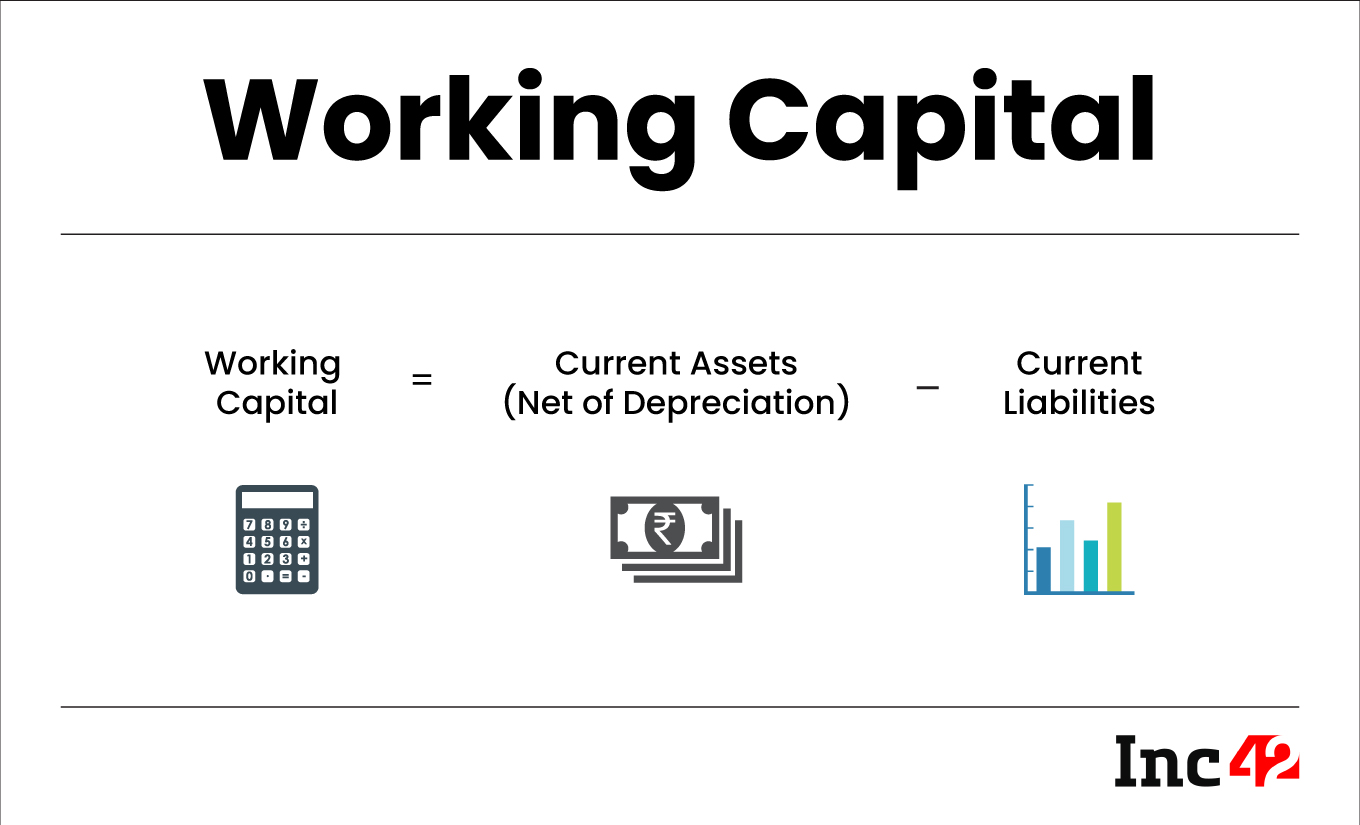What Is Working Capital?
Working capital is the money that a business uses for its day-to-day operations. It’s like the cash in the company’s wallet that it uses to pay bills, buy supplies, and keep the business running smoothly. To figure out working capital, you take what the company owns in the short term (like cash, inventory, and money customers owe) and subtract from it what the company owes in the short term (like the money it owes to suppliers and any loans that need to be paid back soon).
If the number is positive, it means the company has more than enough capital to handle its immediate cash requirements. If it’s negative, the company might not have enough to cover its short-term expenses.
How To Calculate Working Capital?
To calculate it, you need to do a simple math equation. Subtract the company’s current liabilities from its current assets. You can usually find these numbers in the financial statements of public companies. However, this information might not be easily available for unlisted companies.
In simple words, Working Capital = Current assets (Net of Depreciation) – Current Liabilities

What Are The Components Of Working Capital?
It has two main components:
- Current Assets: These are things a company owns that can be turned into cash within a year. Examples include money in the bank, money owed by customers and inventory (products they plan to sell).
- Current Liabilities: These are debts or bills a company needs to pay within a year. Examples include money owed to suppliers, short-term loans, and other short-term debts.
What Are The Limitations Of Working Capital?
The limitations of working capital are:
- Doesn’t Consider Quality: It only looks at the quantity of assets and liabilities, not their quality or how easily they can be turned into cash. For example, having a lot of slow-selling inventory might inflate working capital, but it doesn’t mean the company is financially healthy.
- No Time Value Of Money: It treats all current assets and liabilities as equal, even though money received today is usually worth more than the same amount received in the future. So, it doesn’t account for the time value of money.
- Industry Differences: The amount of working capital that can be considered healthy varies across industries. Using a one-size-fits-all approach may not be suitable for every business.
- Ignores Long-Term Aspects: It focusses on the short term. It doesn’t consider a company’s long-term financial health or its ability to invest in growth.
- Inflation Impact: It doesn’t adjust for inflation, so it may not accurately reflect the purchasing power of a company’s assets and liabilities over time.
Why Working Capital Is Important?
It is like money in your wallet for everyday expenses. Here’s why it’s important in simple terms:
- Paying Bills: It helps businesses pay bills on time, like rent, electricity, and salaries.
- Buying Stuff: A business can buy things essential for operations like inventory and equipment.
- Handling Surprises: It’s a safety net for unexpected costs or when business is slow.
- Business Growth: With enough working capital, a business can take on new projects and expand operations.
- Keeping Everyone Happy: It makes customers and suppliers happy as the business can meet their needs promptly.
Is Negative Working Capital Bad?
Yes, negative working capital is usually not good for a business. Here’s why it’s a problem in simple terms:
- Paying Bills: A business might struggle to pay bills on time, which can lead to late fees or even legal issues.
- Getting Credit: Lenders and suppliers may hesitate to work with a business or might charge higher interest rates because negative working capital suggests financial instability.
- Growing Problems: It can be hard to invest in the expansion of operations when a business is short on cash.
- Stress: It can be stressful for business owners to constantly worry about money.
In a nutshell, negative working capital can make it tough to run a business smoothly. It’s generally better to have positive working capital, where a business has more money available than what it owes.
How Can A Company Improve Its Working Capital?
A company can improve its working capital by doing a few simple things:
- Collect Money Faster: Try to get paid by your customers more quickly. Offer discounts for early payments or send out invoices promptly.
- Manage Inventory: Don’t keep too much inventory on hand. Only stock what you need, and try to sell what you have before buying more.
- Negotiate with Suppliers: Talk to your suppliers about payment terms. Sometimes, you can get better deals or more time to pay.
- Cut Unnecessary Costs: Look for areas where you can reduce expenses without hurting your business. This can free up money for other needs.
- Improve Sales: Increase your sales to bring in more money. This might involve marketing efforts or expanding your product or service offerings.
- Refinance Debt: If you have loans with high-interest rates, see if you can refinance them at lower rates. This can reduce the amount you need to pay each month.
- Use Working Capital Loans: In some cases, taking out a working capital loan can help bridge gaps in your finances. Just be careful not to rely on loans too much.
- Plan Ahead: Create a budget and forecast your cash flow to better predict when you might need more working capital. This can help you prepare in advance.








